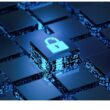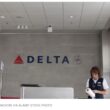Frontline: iPhone shows independent network needed
Limitations associated with the much-hyped rollout of the iPhone underscore the need for an independent 4G wireless network in the United States—the kind of network proposed by Frontline Wireless using 700 MHz spectrum, a company official said yesterday.
During a press conference yesterday, Frontline Wireless Vice Chairman Reed Hundt called the 500,000 Apple iPhones sold during the weekend “amazing,” noting that such sales reflect a “great quarter” for most cellular companies.
However, the “seamy underside” of the iPhone launch is the fact that iPhone customers were forced to sign a two-year service agreement with AT&T Mobility to use the smartphone device, Hundt said.
“They had no choice,” he said.
And the choice made was to have the iPhone use AT&T’s EDGE networks, instead of its newer, faster 3G networks that utilize HSDPA technology—a decision that has been tied to the greater EDGE coverage and the fact that EDGE is more power efficient than HSDPA. But early reviews of the iPhone noted that the network was “pokey” and “excruciatingly slow,” Hundt said.
If the FCC adopts the Frontline proposal, the U.S. would have an independent 4G network that covers 99% of the population as an alternative, Hundt said. Such a network would mean that Apple might not have to be beholden to a single wireless carrier in a five-year exclusive arrangement to operate on a network that’s not fast enough to maximize the iPhone’s potential.
“It’s like the guy who invented the Ferrari and found out that he was selling it into a country of dirt roads,” Hundt said. “We have the chance in America to go from dirt roads to high-speed highways to accommodate this—the very first combination of mobility, computing and communications in a beautiful, beautiful package. We have the chance to give that device the network it deserves.”
Without competition from such a network, entrenched mobile carriers like AT&T and Verizon Wireless have no financial incentive to improve their networks as quickly—and offer access as cheaply—as consumers would like, Hundt said.
“I’m not blaming AT&T; that’s like blaming the sun for global warming. People put the carbon in the air, not the sun; the sun’s just doing what it does naturally,” Hundt said. “AT&T is doing what comes naturally to the guy that owns the only national network—that is, charge you an arm and a leg and lock you up for a two-year exclusive or Jobs as a vendor for a five-year exclusive.”
“What I am saying is there are people to blame here, and they are people in the government. It is not AT&T, it is not Apple, it is the government that arranged things so there would be only one national network.”
The 700 MHz auction is the last chance the FCC has to rectify the situation. Of the 60 MHz to be auctioned, Frontline Wireless has proposed that 10 MHz be earmarked for an E Block licensee that would build a nationwide, wholesale, open-access network for use by commercial and public-safety entities.
“The iPhone is a two-part epiphany. Part One: ‘Oh, my God, we need a 4G—not what AT&T calls a 2G—wireless broadband network in the United States,’” Hundt said. “And the second part of this is that we need it to be national and low price and to provide choice. And that’s Frontline.”

















